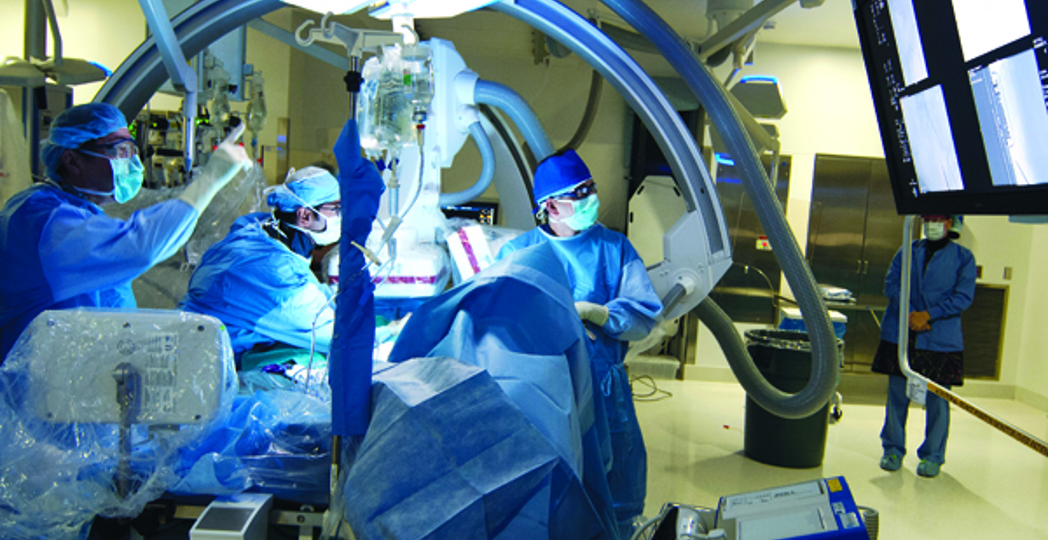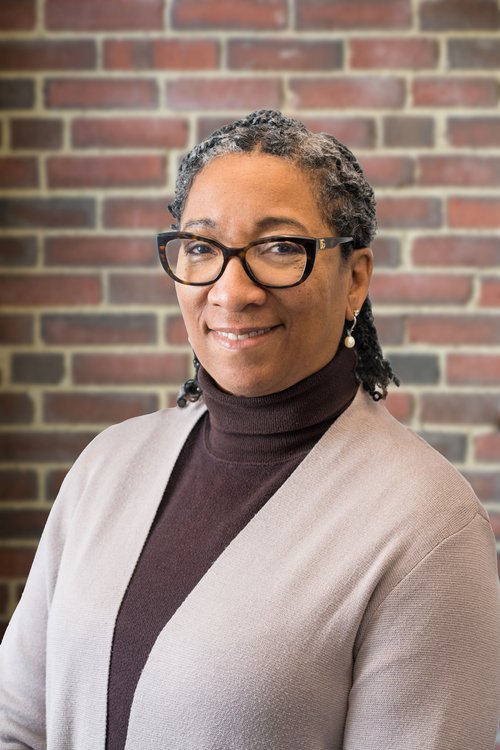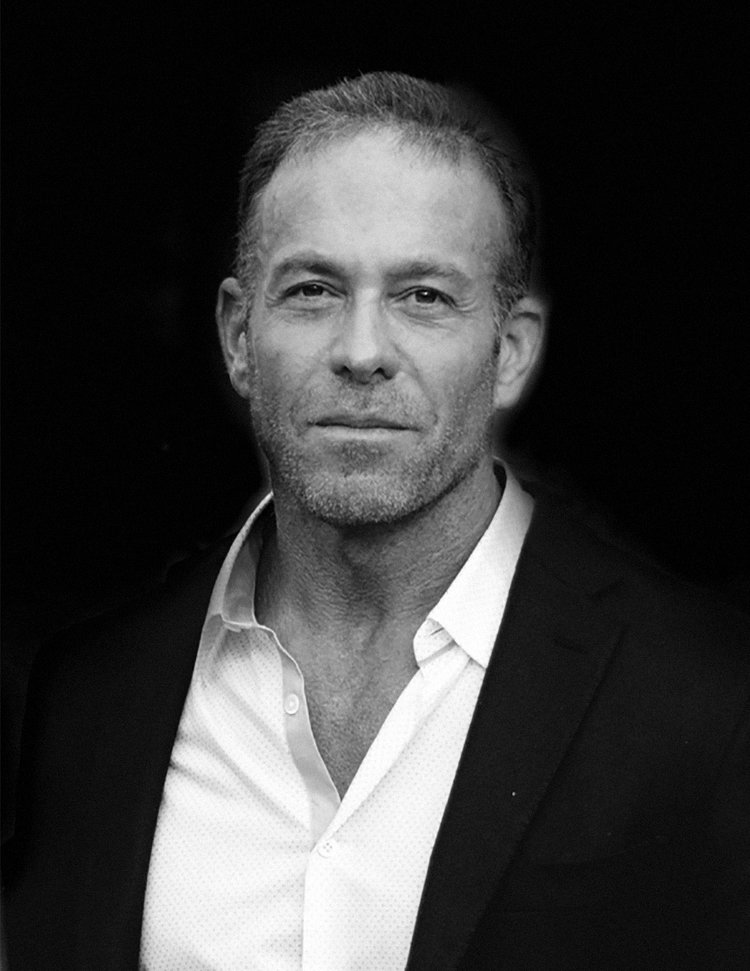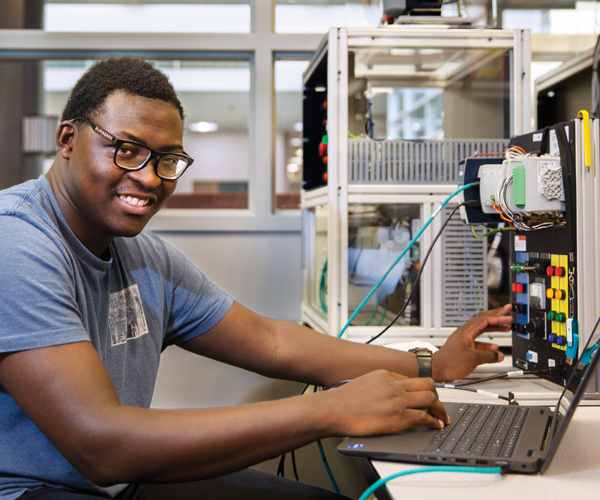Cleveland Cures
Nine ways Cleveland offers the best medical care in the nation.
by Joanne Parrino Cahill, Lynne Thompson, Terry Troy | Apr. 21, 2017 | 4:00 AM

There was a time, not so long ago, when our city smelled of iron, coke and sulfur. Taconite lined our railways. Blast furnaces belched orange flames against a smog-filled sky. Cleveland was a hardscrabble town with three fingers missing from its left hand, and a stick of chaw between its cheek and gum. But that image lives only in distant memory. Today’s Cleveland wears a stethoscope and carries a chart.
In the halls of our health care institutions, you hear foreign tongues — Mandarin, Japanese, Russian, French and Spanish, to name but a few. The medical industry has transformed Cleveland into an international town that’s growing once again.
Our three major health care institutions — Cleveland Clinic, University Hospitals and the MetroHealth System — employ more than 80,000 people. That doesn’t include Summa Health System, Akron Children’s Hospital or Lake Hospital System, which combine to employ 15,000 more. Factor in the many independent practices, laboratories and clinics across our area, and it’s very easy to see the impact of health care on the Northeast Ohio economy.
More importantly, the quality of our health care institutions draws people from surrounding states and even other countries. While Cleveland Clinic is reluctant to give out any information on its patients, it has been reported that Saudi Arabia’s late King Khalid bin Abdul Aziz came to Cleveland for heart surgery. Sheikh Zayed bin Sultan Al Nahyan, former president of the United Arab Emirates, traveled more than 7,000 miles to come here for a kidney transplant. Cleveland Clinic became so popular with Saudi and Arab royalty and business executives that it opened a complete medical “city” in Abu Dhabi in 2015, after being approached by more than 70 countries to export its world-renowned medical brand.
But the Clinic is just one of our world-class health care institutions. We are blessed with three, when many other cities have just one less than a quarter its size. So how did we become such an important medical center? Why do so many people from around the globe flock to our city for treatment?
In no particular order, here are some of the reasons hardscrabble Cleveland is now known for offering patients the best treatment available anywhere.
1: At the Heart of it AllIn 1994, Cleveland Clinic was named U.S. News & World Report’s No. 1 hospital for adult cardiology and heart surgery, a title it has held for 23 consecutive years. What happened in 1994? Was there some sort of seminal moment when the world turned
toward the Clinic’s favor?
Actually, it was a confluence of factors that turned an already great cardiac surgery program into what is arguably the best adult cardiac care hospital in the history of the United States, if not the world. That’s why people come to Cleveland Clinic from all around the globe.
“When Fred Loop became CEO of Cleveland Clinic,
he was a very great cardiac surgeon,” says Dr. Steven Nissen, MD, MACC, and chairman of the Robert and Suzanne Tomsich Department of Cardiovascular Medicine at Cleveland Clinic. “He recruited a lot of people, including my predecessor, Eric Topol, who was a fireball.”
Topol recruited heavily, bringing in talent to balance the quality of cardiovascular medicine with the team in cardiovascular surgery.
“So, we could pingpong off each other, writing research papers and referring patients back and forth,” says Nissen. “We now have an institute with vascular surgery, cardiac surgery and cardiology all together in a single entity. The synergy of having those three departments under a single umbrella is very important. In other places in our country, it doesn’t work that way. That linkage has really helped us over the years.”
It’s a patient-focused prescription for medical excellence that’s being used throughout the many disciplines at Cleveland Clinic today, including neurosurgery and eye care.
And success breeds success. Today, the Clinic attracts global cardiac specialists, who have not only enhanced its reputation for cardiac excellence, but made it the go-to destination for anyone with a heart problem. Indeed, the Clinic is home to almost 275 doctors in the department, including some 150 cardiologists, many of whom specialize in specific disorders.
“Because of our size, we are able to focus on very specialized areas,” says Nissen. “We have people who spend their entire lives focused on treating a specific condition, and they become very good at it.” Such people include Nissen’s friend and co-author Dr. Marc Gillinov, whom late comedian Robin Williams thanked after his 2009 heart-valve repair operation.
Gillinov is a world-renowned expert in robotic surgery for mitral valve repair. “And he probably does it better than anyone in the world,” adds Nissen.
The Clinic also is home to other world-renowned specialists, like Dr. Nicholas Smedira, a thoracic and cardiac surgeon who works with Dr. Harry Lever, a cardiologist, in the treatment of a cardiac disorder known as hypertrophic obstructive cardiomyopathy, where the heart muscle becomes so thick it ceases to function properly. Or Dr. Heather Gornik, who treats patients with fibromuscular dysplasia, a condition that causes the narrowing or enlargement of medium-sized arteries, which could impact the function of major organs.
“At other hospitals, they may see only one patient a year with an uncommon disorder, but we will see literally hundreds of people from around the world every year,” says Nissen. “So, we know how to treat or manage a disorder. Remember, a specific disorder may be very rare, but it’s not rare if you’re the one who has it.”
“Our size, breadth and depth allow us to have very strong expertise in both the common things and the less-common things,” Nissen adds. “So, I can refer patients to a specific person in our department, who can easily explain the risks and benefits of a given procedure, someone who will give the patient all the options he or she needs
to know to get better."
UH is a World-Class Leader in Heart Surgery and Diagnostic Imaging
Surgeons led by Drs. Joseph Sabik and Soon Park at UH’s Harrington Heart & Vascular Institute provide world-class heart surgery, including heart transplantation and valve repair and replacement. Minimally invasive approaches enable catheter-based valve replacement in awake patients, reducing recovery time and risk of complication.
UH is known for advanced diagnostic imaging that minimizes invasive tests and procedures. For example, UH was the first in the U.S. to perform HeartFlow CT-fractional flow reserve for a detailed map of the patient’s coronary arteries, showing whether blockages are functionally significant. More than 16,000 healthy people have taken advantage of UH’s no-cost coronary artery calcium screening — personalized imaging
that determines the risk of heart attack or stroke.
UH is a leader in the Onco-Cardiology field, focusing on unintended complications to the heart from chemotherapy and radiation in cancer patients. A multi-disciplinary team works in the UH Seidman Cancer Center to optimize treatment and minimize side effects.
Discoveries by 70-plus UH physician-scientists are changing how patients are diagnosed and treated. Through UH, Clevelanders have access to more than 95 clinical trials evaluating new drugs, devices and adult-stem cell therapies.
2: Cutting-Edge Cancer CareThe National Cancer Institute reports that nearly 40 percent of men and women in the U.S. will be diagnosed with cancer at some point in their lives. Over the past decade, University Hospitals Seidman Cancer Center has seen a four-fold increase in the total number of inpatient and outpatient cancer patient visits. UH Seidman doctors treat 10,000 patients annually. For these patients, help cannot come soon enough. But there is hope to be found within Cleveland’s world-class hospitals. Doctors from UH Seidman and Cleveland Clinic’s Taussig Cancer Institute are finding solutions and “Curing Cleveland.”
One of the newer cancer-fighting tools at UH Seidman is a $30 million Proton Therapy Center. The center is one of about 20 operational proton therapy systems in the country and the first in Ohio. It applies highly targeted and high-dose radiation directly to tumors while decreasing exposure to healthy surrounding tissue. This is especially useful in smaller, sensitive areas like the brain and spine, as well as in pediatric patients.
The Proton Center is part of UH Seidman’s state-of-the-art, free-standing facility that opened in 2011. Not to be outdone, Cleveland Clinic’s Taussig Cancer Institute, which is ranked number one in cancer care in Ohio and eighth in the nation by U.S. News and World Report, also opened a new free-standing cancer facility on its main campus in March. Both hospitals also see patients at community-based locations throughout Northeast Ohio.
While the two hospitals often are considered competitors, they also collaborate, especially when it comes to cancer research. UH Seidman and Taussig are members of the Case Comprehensive Cancer Center, a collaboration between UH Seidman, the Clinic and Case Western Reserve University School of Medicine. The center is designated by the prestigious National Cancer Institute as one of only 47 comprehensive cancer centers in the country.
Among other things, this designation gives both hospitals access to early-phase clinical trials with drugs from the NCI. Nearly 20 percent of UH patients participate in clinical trials,
well above the national average of 3 to 4 percent. A special unit at UH Seidman is devoted to more than 300 clinical trials offered there, including novel chemotherapy drugs.
Cleveland’s cancer specialists also are pioneers in stem cell transplantation and genomics — the new frontier of cancer research — as scientists aim to more precisely determine what is wrong with an individual tumor and devise a personalized treatment plan.
But not all cancer treatments involve drugs and/or high-tech equipment. One noninvasive treatment at Taussig is almost as easy as placing a heating pad on the skin. The treatment, known as hyperthermia, is being used for people receiving radiation treatment for cancers that are on, or just below, the skin’s surface. Taussig is the only cancer center in Ohio, and one of the few in the U.S., using this method. The heat, usually applied twice a week during a course of radiation, can improve the effectiveness of radiation alone.
Cancer Care for AdolescentsWhile early cancer detection and treatments are improving within the overall population, survival rates for teens and young adults have remained alarmingly unchanged over the last three decades. The Angie Fowler Adolescent and Young Adult Cancer Institute at University Hospitals opened in April 2014 to serve this population that often is caught between pediatric and adult oncology. These young people face unique challenges. Their cancers are different, as are their social needs and physical development. Also, this generally healthy population tends to see the doctor less frequently, so cancers can go undiagnosed until the disease is more advanced. Isolation and loneliness are common problems, as young people feel they are missing out on their social life, friends or school. At this unique center, patients find peers with a common understanding, which can significantly help with recovery. Amenities like a rooftop garden and spaces for recreation can help make their time in the hospital more bearable. The institute is named after Angie Fowler, who passed away from complications of melanoma in 1983. Her parents, Char and Chuck Fowler, donated $17 million to create a place to better serve this age group.
Giving Cures a ChanceStanton Gerson, MD, a UH oncologist and director of UH Seidman Cancer Center, wears many hats in his work to fight cancer. His influence reaches across Greater Cleveland, throughout the U.S., and even to outer space.
In addition to heading up the center, in October, the Harvard University Medical School graduate was named president of the Association of American Cancer Institutes, comprised of 96 premier academic and free-standing cancer research centers in the U.S. and Canada. One of his first priorities in his new role was to outline a plan to support the 21st Century Cures Act signed into law last year. The act includes $1.8 billion for cancer research and the “Cancer Moonshot Initiative,” launched by former Vice President Joe Biden to significantly accelerate cancer research.
“It gives us more tools and financial support to take our discoveries and bring them to patients more quickly,” says Gerson, who is an expert in stem cell research and its use to treat cancer, heart disease, stroke, MS and other diseases. In addition to his other responsibilities, he is the director, Case Comprehensive Cancer Center, and director, National Center for Regenerative Medicine at Case Western Reserve University. Gerson’s work will reach outer space through a project on which he is working with NASA to study cosmic radiation and the effect on stem cells in astronauts.
3: Unmatched Brain PowerIn Cleveland, health care facilities are experimenting with electrical stimulation. Cleveland Clinic’s Neurological Institute has been on the forefront of deep-brain stimulation research, and is investigating whether it can help stroke victims more fully recover from stroke-induced paralysis.
Like its Department of Cardiovascular Medicine, Cleveland Clinic’s Neurological Institute operates under the same patient-focused model, allowing easy collaboration between surgeons, neurologists and psychiatrists.
“It drives our quality forward and improves our ability to research because we have broken the traditional barriers,” says Dr. Andre Machado, MD, Ph.D., and chairman of Cleveland Clinic’s Neurological Institute.
And, like the Department of Cardiovascular Medicine, the Neurological Institute has attracted and retained the nation’s best and brightest surgeons, neurologists and psychiatrists. It can offer care from doctors who are world-renowned authorities in specific diseases like epilepsy, Alzheimer’s, multiple sclerosis or Parkinson’s, as well as doctors who specialize in lesser known neurological disorders.
“We provide a full spectrum of treatment and have such depth of care, that it is often
the best in the nation in terms of its care for a specific disorder,” says Machado.
The Neurological Institute has been making quite a name for itself, ascending to No. 6 on the U.S. News & World Report’s list of best hospitals for adult neurology and neurosurgery.
“It would be almost impossible to do this at another hospital,” says Machado, “especially given the number of physicians, scientists and resources we had to bring together to pull it off.”
Machado is referring to the first deep-brain stimulation (DBS) surgery for stroke recovery, part of an ongoing clinical trial assessing the procedure’s potential to improve movement in patients recovering from stroke. It was performed last December.
Stroke is the leading cause of long-term disabilities in the U.S. Despite rehabilitative efforts, one-third of stroke patients maintain long-term motor deficits severe enough to be disabling.
During the six-hour procedure, electrodes were implanted in the patient’s cerebellum, which has extensive connections with the cerebral cortex. Connected to a pacemaker device, DBS electrodes provide small electric pulses to help people recover control of their movements.
“If this research succeeds, it is a new hope for patients who have suffered a stroke and have remained paralyzed after a stroke. It is an opportunity to allow our patients to rehabilitate and gain function and, therefore, gain independence,” Machado says. “Our knowledge to date shows that deep-brain stimulation can help the brain reorganize, can help the brain adapt, beyond what physical therapy alone can do. The goal of our study is to boost rehabilitation outcomes beyond what physical therapy alone could achieve.”
The patient responded well to the surgery, and has now begun physical therapy.
“If this trial is successful, it will mean that we have achieved a new level of care for patients who have suffered a stroke,” adds Machado. “It means that the level of paralysis in stroke patients in the future will be less, and, hopefully, allow disabled patients to become independent again.”
Is it any wonder that the Neurological Institute at Cleveland Clinic has seen patients from Asia, Europe and South America, as well as many of the 50 United States?
4: Knowing the Nose
Dr. Steven Houser met the patient who would change the course of his career in the mid-1990s, as a third-year otolaryngology resident at Cleveland Clinic. One day, a middle-aged woman who had recently undergone nasal surgery came into the office complaining of chronic congestion. He dutifully examined her, expecting to find a deviated septum or polyps blocking one or both nasal cavities.
“I could see all the way through her nose easily to the back where the palate moves,” remembers Houser, now associate professor of otolaryngology at Case Western Reserve University and director of rhinology, allergy and sinus at MetroHealth Medical Center. “I thought, ‘She should be able to breathe great!’”
Houser began digging into decades of research. The explanation it yielded was a condition so rare that many ear-, nose-and-throat specialists question whether it exists: empty-nose syndrome, which he defines as a paradoxical obstruction, where a patient feels the sensation of not being able to breathe through the nose, despite the nasal cavities being clear.
“[Patients] can actually feel like they’re suffocating,” he says.
By 2001, Houser had developed a simple surgery to ease the symptoms. Sixteen years later, only a handful of other doctors (one of whom is in the U.S.) have adopted his technique. The majority of the approximately 75 patients on whom he’s operated come from outside Northeast Ohio, some from as far away as Australia.
“Most of these patients really find me on the Internet because they [don’t] get any relief from their treating physicians,” he says. “These patients are oftentimes very distraught with their symptoms. And this concept of empty-nose syndrome is not taught well or explained well in the literature.”
Houser explains that empty-nose syndrome results from poor healing that can take place after nasal surgery, causing inflammation of the turbinates, a series of three “baffles,” one on top of the other in each nasal cavity, that protrude from the side of the nose toward the septum. The purpose of each turbinate — the inferior, middle and superior — is to trap particulate matter and humidify air on its way to the lungs. Each blood-vessel-rich structure — particularly the inferior turbinate, located closest to the nasal vestibule just inside the nostril — can become engorged and enlarged due to allergies, chronic sinusitis, chronic infection and more.
When doctors perform surgery to alleviate such conditions, they often reduce the size of the inferior turbinate. The same holds true during cosmetic rhinoplasty to reduce the size of the nose. When nerves in the inferior-turbinate lining fail to regenerate properly, patients no longer experience the feeling of air passing through it.
“Interestingly, when they get a cold, they oftentimes feel better. I’ve had patients with empty-nose [syndrome] tell me they actively try to catch colds,” Houser says.
Inspired by that paradox, Houser developed a two-hour procedure in which he inserts strips of processed cadaver dermis under the nasal-cavity lining in the area of the missing or numb inferior turbinate. The resulting “speed bump” slows and deflects the flow of air so it strikes the middle turbinate above — a structure that often remains intact after surgery.
“That’s where, then, the patient’s nerves are triggered,” he says. “They’re told, ‘Oh, yes, we are breathing. We feel the air going through the nose now.’”
The results of the simple surgery are dramatic. Patients typically report a 40- to 80-percent improvement. Some are able to sleep through the night after years of waking. Others can focus on a work project for hours without a single thought of their breathing.
“I’ve had patients say to me, ‘Boy, that surgery kept me from committing suicide,’” Houser adds. “These patients can be really, really miserable."
5: Babies and Children
Since 1891, University Hospitals Rainbow Babies and Children’s Hospital has forged its identity by caring for Cleveland’s youngest residents. More than a century later, it has become a nationally recognized leader in numerous pediatric disciplines, but is perhaps best known for its expert care for the tiniest ones.
Rainbow’s Neonatal Intensive Care Unit is ranked best in Ohio and No. 4 in the nation by U.S. News & World Report. It is regarded as an international leader in the treatment of critically ill and extremely low-birth weight babies. Rainbow's NICU has one of the highest survival rates in the nation and routinely cares for premature babies as tiny as 23 and 24 weeks. (A full-term baby is 40 weeks.) The NICU also provides expert treatment for narcotic-exposed newborns. In 2009, it opened one of the nation’s first family-centered NICUs with spaces for parents to stay with their babies.
Rainbow also is home to the only Level I pediatric trauma center in northern Ohio. Since 1991, it has maintained this status and treats the most severely injured children 24 hours a day. Its trauma care spans from the moment the child enters the emergency room all the way through recovery.
Beyond the NICU and trauma center, Rainbow is recognized annually by U.S. News & World Report as one of America’s best children’s hospitals in all 10 pediatric specialties, including neonatology, pulmonology, cancer, orthopedics
and urology.
Rainbow’s primary care doctors see patients at 81 locations throughout Northeast Ohio. When complex diagnoses are made, young patients can easily access Rainbow specialists, all of whom also serve on the faculty at Case Western Reserve University School of Medicine. Pediatric cancer patients also benefit from the UH Seidman Cancer Center’s services and technology, including proton therapy and the Angie Fowler Adolescent and Young Adult Cancer Institute.
Further strengthening Rainbow is University Hospitals MacDonald Women’s Hospital, Ohio’s only hospital just for women. With 4,100 births at MacDonald in 2015, any necessary newborn care is only steps away. This is especially beneficial for women with high-risk pregnancies (such as mothers with cancer, cystic fibrosis or congenital heart disease), as their prenatal care can be coordinated with Rainbow, and their newborns can immediately be treated or admitted to the NICU, if needed.
6: Restoring Hope and Movement
Electrical Stimulation Center is the only medical facility in the world offering quadriplegics with spinal cord injuries the chance to regain functional use of a single arm and hand via a completely implantable electronic system. Unlike other systems, there are no external electrodes or wires, not even an external battery pack.
Kevin Kilgore, Ph.D., lead researcher of the early feasibility trial, says the center — a consortium of Case Western Reserve University, Louis Stokes Cleveland VA Medical Center, MetroHealth Medical Center (one of the few federally designated model systems for spinal cord injury rehabilitation) and University Hospitals — fields inquiries from patients across the country. He estimates that a couple hundred are waiting to be screened for the study at MetroHealth Medical Center. But the number of people who can be can treated is limited by money.
“The rate at which we can implant patients is totally determined by the federal funding that we get,” he explains. “Basically, that has to do with how well we write grants.”
The latest version of the system, introduced last year, consists of five to seven “stimulators,” each a little bigger than a piece of Dentyne- or Trident-brand gum, connected by very thin wires running beneath the skin of the arm. Each stimulator is strategically placed to spur a specific muscle into action — say, the triceps, which raises the arm over the head.
“It’s kind of like a pacemaker,” Kilgore says. “Except it's in a muscle in your arm.”
The patient activates the system with a move he or she still can make — say, a twitch of the shoulder — to feed themselves, write, use a smartphone, take money out of a wallet and perform other simple tasks. Some people are remarkably independent once they’re in their motorized wheelchairs.
“A few of our patients have gone back to work, for example, or back to school, back to college,” Kilgore says.
A flip-phone-sized battery implanted in the abdomen replaces the external source that powered two previous generations of the system. (The first, developed by Case biomedical engineer Hunter Peckham, Ph.D., and MetroHealth orthopedic hand surgeon Dr. Michael Keith, debuted in 1986.) That battery is charged wirelessly by laying a charging pad directly on the skin. As a result, patients can sit under a shower or in a bathtub without worrying about getting anything wet.
“These batteries will last at least four or five years,” Kilgore says. “Actually, on the bench, it looks like they could last quite a bit longer. It’s a fairly simple surgery to replace them.”
At press time, two patients had received the system; another five are slated for surgery this year. Kilgore anticipates increasing patient access by training doctors at two yet-to-be-determined medical facilities to install and maintain it. Although, MetroHealth treated all 25 patients with a second-generation system, center-trained teams at sites in the United States, Europe, Japan and Australia performed surgeries on 200 of the 220 patients with a first-generation counterpart.
“That’s a little way off,” he cautions. “And it kind of depends on whether we get sufficient grant funding to actually carry it out.”
But patients still may prefer to schedule their surgeries in Cleveland. They and their caregivers will be able to stay in a specially equipped five-suite home on MetroHealth’s Old Brooklyn campus while they learn to master their newly acquired mobility.
7: Collaborative Care, When and Where it CountsWhen people dial 911, it is easy to take for granted that help will arrive ASAP. Whether it’s a car accident, heart attack or fire, every second counts.
Trauma care in Northeast Ohio is a collaborative undertaking. It involves municipal emergency medical services, 911 dispatchers, multiple hospitals and emergency rooms with varying care capabilities and lots of doctors, nurses, paramedics and other staff — all responding to emergencies 24/7.
Greater Clevelanders have access to two Level I trauma centers: one longstanding center at MetroHealth Medical Center and another recently added at University Hospitals. Also, since 1991, University Hospitals Rainbow Babies and Children’s Hospital has been home to the only Level I pediatric trauma center in northern Ohio. These centers treat the most critically ill or injured patients with a full range of specialists. Metro also is well-known for its burn unit, established in 1970. The 14-bed unit can care for children or adults, and treats 1,700 patients per year.
Before December 2015, when UH added its Level I trauma center, Metro received most of the worst trauma cases. At that time, there were questions about whether two Level I centers were needed, and critics voiced concerns about taking away staff, patients and dollars from Metro. Advocates for the new Level I center at UH said it would improve response times and fill a gap left on the East Side when four smaller hospitals closed their trauma centers at Mount Sinai, St. Luke, Huron Road Hospital and St. Vincent Charity Hospital.
Helping coordinate all this is Northern Ohio Trauma System, established in 2010 to evaluate and improve outcomes, optimize resources and provide education. Members from all facets of trauma care collaborate to implement protocols and develop quality-related action plans and guidelines. NOTS recently restructured with the addition of UH.
Robert Wyllie, MD, chief of medical operations at Cleveland Clinic and a pediatric gastroenterologist, serves as chairman of NOTS.
“Metro’s volume has dropped a little, but we were expecting that,” says Wyllie. “We are looking at the data. It is too early to say, but we are going to create a win-win situation.”
Before NOTS was created in 2010, the mortality rate for trauma patients transported by Cleveland EMS was 5.7 percent. After, it dropped to 2.7 percent. The motto on NOTS’ annual report says it all: “Right Patient, Right Place, Right Time.”
This means getting the victim to help as soon as possible, taking into consideration traffic levels, proximity and, most important, the level of care the injured person needs. Another job of NOTS is to help coordinate during disasters and big regional emergencies. Recently, it helped coordinate activities with the City of Cleveland, Secret Service and FBI in preparation for the Republican National Convention.
Many other local hospitals have emergency rooms but are not designated as trauma centers:
Level I Trauma Centers
+ Cleveland Clinic Akron General, Akron
+ MetroHealth Medical Center, Cleveland
+ UH Rainbow Babies and Children’s
Hospital Pediatric Trauma, Cleveland
+ University Hospitals, Cleveland
Level II Trauma Centers
+ Cleveland Clinic Fairview Hospital,
Cleveland
+ Cleveland Clinic Hillcrest Hospital,
Mayfield Heights
+ MetroHealth Medical Center
Pediatric Trauma, Cleveland
Level III Trauma Centers
+ Southwest General Health Center,
Middleburg Heights
+ UH Geauga Medical Center, Chardon
+ UH Portage Medical Center, Ravenna
+ UH St. John Medical Center, Westlake
8: Focus on Eye Care
During the first eight years of his tenure as chairman of Cole Eye Institute, Dr. Daniel F. Martin has seen his department more than double in size, with the number of patients seen and surgeries performed growing dramatically. Cole Eye Institute today is one of the largest academic clinical practices in the U.S.
“By becoming a more substantial presence not only on our own campus but within the region, we have also attracted not just world-class talent, which everybody claims to have, but extraordinary world-class talent,” says Martin, who took the reins of the institute in 2008. “For example, our retina service is regarded by many as the premier academic retina service in the U.S.”
Cole Eye Institute is among the best in the world and is one of America’s best ophthalmology programs. It is rated No. 1 in Ohio by U.S. News & World Report. Cole Eye Institute leads numerous national clinical trials every year and is credited with establishing innovative therapies for macular degeneration and diabetic macular edema.
“Physicians at Cole lead some of the most important national and international research groups in the world as part of our quest to develop new therapies for blinding eye diseases,” says Martin.
Cole Eye Institute is credited with playing a major role in the development of anti-VEGF medications, a group of drugs that have revolutionized the treatment of macular degeneration and diabetic retinopathy.
“One of our doctors at Cole treated the first person in the world with an anti-VEGF drug,” says Martin. “Several of our retina physicians led the clinical trials that established these drugs as standard of care for macular degeneration and also led the trials that resulted in their FDA approval.”
Cole Eye Institute does have a bit of an advantage over other eye clinics in the form of its imaging process.
“We have a very strong imaging research center that focuses on all aspects of imaging, including imaging from the front of the eye and at the back of the eye,” Martin explains.
“When you are operating in a very small space like the back of the eye, it’s very hard to see and access that space. So how you see it is critical.”
So, the imaging research performed at Cole has also become the national standard of how people approach various surgical procedures at the back of the eye.
“We have one of the largest OCT reading centers in the world,” adds Martin.
OCT, or optical coherence tomography, is an imaging method used to generate a picture of the back of the eye. The procedure takes a picture of the retina using dim red light, and measures the amount of light that reflects back. It’s routinely used in patients with retinal diseases such as AMD and diabetic retinopathy as well as glaucoma, and is being tested as a new way to follow patients with multiple sclerosis and test their recovery to treatments.
9: Sexuality InclusivenessAs a junior faculty member at Case Western Reserve University, Dr. Henry Ng heard stories of the discrimination experienced by members of the lesbian, gay, bisexual and transgender community in local doctors’ offices. The tone of an initial consultation could become uncomfortable to downright cold when a patient corrected a physician’s assumption about his or her sexuality. In some cases, they were referred to another medical provider or flatly refused care.
Ng and a colleague, Dr. Douglas Van Auken, were so concerned by the reports of discrimination, even physical abuse, that they co-founded the MetroHealth Pride Clinic in April 2007. The first facility of its kind in Cleveland and Ohio (and one of the first hospital-based clinics of its kind in the nation) provides outpatient primary care in a welcoming, supportive environment to lesbians, gays, bisexuals and transgender individuals from 4:30 to 9 p.m. every Wednesday at MetroHealth’s Thomas F. McCafferty Health Center in Ohio City.
Ng, who serves as clinical director, estimates that 30 percent of the clinic’s approximately 1,500 patients come from other areas of the state. He notes that the few Ohio providers catering to LGBT communities of which he is aware are so busy that they aren’t taking new patients. Another physician associated with Ohio University in Athens sees only students. A handful of patients have traveled to the clinic from outside the state.
Many people have little to no access to culturally competent LGBT healthcare, Ng says.
The Pride Clinic’s services exceed those of the average general practitioner. Ng calls it “primary care plus.”
In addition to screening and treatment for sexually transmitted diseases, HIV prevention and testing and care for HIV-positive patients, the clinic provides transgender hormonal care and referrals to specialists performing gender-confirmation surgeries. Counseling regarding sexuality, reproductive health and family planning — say, culling and freezing eggs before the ovaries and uterus are removed from a woman transitioning to a man — are standard.
“We try to remove all that stigma from those conversations,” Ng says.
Ng and his colleagues also provide medical and behavioral-health services to LGBT and questioning youth. Some of the children bucking traditional gender assignment and expectations are as young as 4. The offerings are a boon for blindsided parents and guardians.
“Very few families have experiences and resources that fully prepare them to take care of a gender-different kid,” Ng observes.
Three of the clinic’s five doctors also see patients during their office hours at MetroHealth primary care sites in Brecksville, Middleburg Heights and the system’s main campus. —
Trending
-
1
-
2
-
3
-
4
-
5










